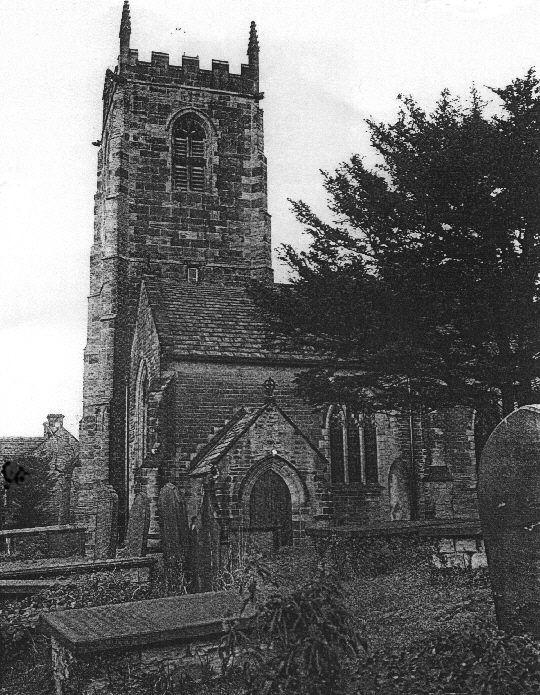Peter F(f)retwell
The uncertainty as to Peter F(f)retwell’s date of birth is acknowledged in
this extract of a letter from WEF to the archivist of the Huddersfield
Library:
I do not know when Peter F was born, nor when and to whom he was
married. It might have been Mary whose death and burial is recorded in
the Cawthorne parish registers on 16th November 1710. As those registers
were only started in 1653, they are of little assistance. However, Miss
Meredith, the archivist at the Sheffield Library, drew my attention to
an entry in the Spencer Stanhope deeds, where in 1617 a Peter Fretwell
is allotted a seat in the church, presumably Cawthorne. It is likely
that this Peter was the grandfather or father of the other Peter....”

Some more information, though sketchy, has come to light since that letter
was written. WEF surmised that Peter was born about 1630, probably in the
Cawthorne area. He is believed to have married a woman named Mary (née?),
again probably in Cawthorne, date unknown, but presumably, around 1650.
Peter's death is recorded as 16 January 1684. If the Mary tentatively
identified by WEF was Peter’s wife, she outlived him by some 26 years, and
her burial is recorded in the Cawthorne Parish Register for 1710 - Mary
Fretwell (Maria Fretwell in B.T.) Nov 16th - and if she had
been born about the same time as her husband, she would have been around
70 years old when she died - quite an age for the time. From the records,
it would seem that Peter and Mary had 9 children.
Children of
Peter Fretwell and Mary ?
|
Name |
Born/Baptised |
Died/Buried |
|
Jenitte |
Bef. 1653 |
26 May 1660 |
|
Francis
|
Bef. 1653 |
Abt. 1685 |
|
Robert |
Bef. 1653 |
1721 |
|
Dorrithie |
29 Jul 1655 |
9 Jul 1685 |
|
John |
22 Jul 1658 |
30 Nov 1692 |
|
Thomas |
21 Jul 1661 |
27 Jul 1687 |
|
Johannes |
29 Jul 1664 |
15 Nov 1724 |
|
Joshua |
17 Jun 1668 |
30 Nov 1707 |
|
Matthew |
17 Jun 1668 |
5 Jan 1728 |
At this stage there is some question as to whether Francis was the son of
Peter and Mary. The Parish Register dates do tally, the following must be
read with this in mind. As the Cawthorne Parish Registers so not commence
until 1653, the children Francis, Robert and Jenitte were born before that
year.
At the time of Peter F(f)retwell the village boasted a Church, well
‘patronised’ by the Fretwells, which was a perpetual curacy, dedicated to
All Saints, and a Free-School founded in 1639 by decree of the Duchy court
at Lancaster. The cost of maintaining a master was shared between the
Court, which appointed the master, and the inhabitants of Cawthorne. By an
Act of 1405 every town or village was bound to provide a pair of stocks.
This was a sign of dignity, and if, along with this seat for malefactors,
a village had the status symbols of a constable and a pound for stray
cattle, it could not be mistaken for a mere hamlet.
 |
|
Cawthorne Parish Church |
There was also a concern for the French Protestants—the Huguenots—many of
whom had fled to Protestant countries such as England after the Massacre
of St Bartholomew in 1560. The religious freedom granted the French
Protestants by the Edict of Nantes in 1598 was revoked in 1685, resulting
in further emigration. The Cawthorne residents did their bit to assist
these persecuted people, as is duly recorded in the Parish Register.
Terriers 7.5.4
May ye 9th 1688
Received then of the Minister and Church Wardens of Cawthorn the som of
three pound thirteen shillings an eleven pens collected for the P’sh of
Cawthorn upon a breefe bearing date the 13th January 1687/88 and
presented to the distressed Protestants of France. Received at Wakefield
by THOM. HOLMES
July the 9 1689
Collected in the Parish of Cawthorn for Just Protestants and paid then
to Mr. WALDBANK by us the sums of Three Pounds Ten shillings and Three
pens EDW.SMITHSON,
THOMAS DICKSON
THOMAS FAWLEY
Churchwardens
(In August 1690 another collection was given - this time One Pound Ten
Shillings and Three Pence - for the Just Protestants).
The Census of 1851 recorded that the people of Cawthorne were principally
engaged in agriculture and handloom weaving, with some blacksmiths,
tanners and coal miners, and it is likely that this range of occupations
was not much changed from the time of this first Fretwell generation.
The most eminent family, and was still so up to the mid 1950s, was the
Spencer-Stanhopes, who oversaw the social and economic life of the village
from their estate residence Cannon Hall. Apart from agriculture, their
fortunes had been founded in the old iron industry and later coal mining,
and it was through these industries that the Spencer-Stanhopes provided
employment for the great majority of Cawthorne. |
